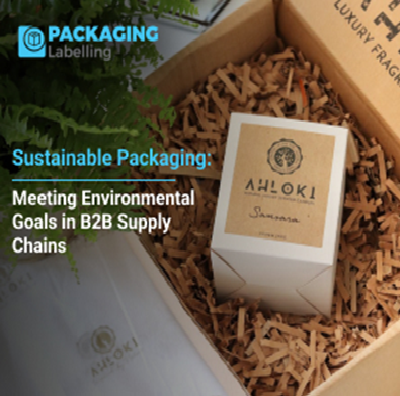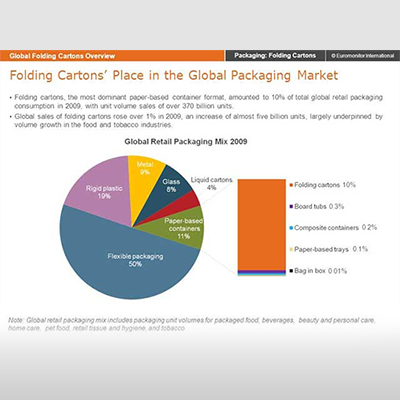Sustainable Packaging: Meeting Environmental Goals in B2B Supply Chains

Introduction:
In recent years, sustainable packaging has risen to prominence as a critical component in the global effort to mitigate the environmental consequences of business operations, particularly within B2B supply chains. As companies worldwide strive to harmonize their practices with evolving environmental objectives and the ever-growing expectations of consumers, sustainable packaging has emerged as a pivotal player in realizing these aspirations. This article will delve into the vital role of sustainable packaging within B2B supply chains, explore its numerous advantages, and outline actionable strategies for the successful integration of sustainable packaging solutions.
A) Understanding the Importance of Sustainable Packaging
Sustainable packaging encompasses the utilization of materials and design strategies aimed at reducing adverse environmental effects while ensuring the efficient safeguarding of products during transportation and storage. This comprehensive approach considers the complete lifecycle of packaging, from the extraction of raw materials and manufacturing to distribution, utilization, and eventual disposal.
Environmental Preservation: B2B supply chains generate vast quantities of packaging waste, which can harm ecosystems, contribute to landfill overflows, and release harmful chemicals into the environment. Sustainable packaging helps reduce this impact by using eco-friendly materials and promoting recycling and composting.
Reduced Environmental Impact: Sustainable packaging frequently boasts a lighter weight and demands less energy during production compared to conventional packaging. Consequently, this leads to diminished transportation expenses and a lower carbon footprint, making a substantial contribution to the global efforts against climate change.
Improved Brand Image: With growing consumer emphasis on sustainability, businesses that embrace sustainable packaging practices are better positioned to cultivate a favorable brand reputation. This, in turn, has the potential to foster heightened customer loyalty and bolster sales.
Regulatory Compliance: Governments and regulatory bodies are introducing stricter environmental regulations. Sustainable packaging can help companies stay compliant and avoid fines or legal issues.
| Also Read:Eco-Friendly Packaging Materials: Meeting Sustainability Goals in B2B Supply Chains |
Cost Savings: Although there may be initial investments in adopting sustainable packaging solutions, they often result in long-term cost savings through reduced material usage, transportation costs, and waste disposal expenses.
| Also Read: Packaging Optimization: Reducing Waste and Cost in Manufacturing |
B) Strategies for Sustainable Packaging in B2B Supply Chains
Now that we understand the significance of sustainable packaging, let's delve into some practical strategies that businesses can implement to meet their environmental goals.
Material Selection: Choose packaging materials that have a lower environmental impact. Opt for materials that are recyclable, biodegradable, or made from renewable resources. For example, replace plastic packaging with paper, cardboard, or bioplastics.
Minimalist Design: Streamline packaging design to use less material while maintaining product safety. Avoid excessive layers and bulky designs that lead to overuse of resources.
Right-Sizing: Use packaging that is appropriately sized for the product to minimize waste and optimize space during transportation. Oversized packaging not only wastes resources but also increases shipping costs.
Reuse and Recyclability: Design packaging with recyclability and reusability in mind. Include clear recycling instructions on packaging to encourage proper disposal by consumers.
Supply Chain Collaboration: Collaborate with suppliers to ensure they use sustainable packaging for the products they provide. Encourage them to adopt eco-friendly practices in their own operations.
| Also Read: Eco-Friendly Packaging Options for B2B: A Comprehensive Guide |
Supply Chain Transparency: Enhance transparency within your supply chain by openly sharing information regarding the sustainability of your packaging materials and practices. This transparent approach can play a pivotal role in fostering trust among both customers and partners.
Lifecycle Analysis: Conduct a thorough lifecycle analysis of your packaging to identify areas for improvement. This analysis should consider the environmental impact of each stage, from material extraction to disposal.
Innovative Materials: Stay updated on advancements in sustainable packaging materials and technologies. Embrace innovations like mushroom-based packaging, edible packaging, and 3D printing for customized, eco-friendly packaging solutions.
Educate Employees: Train your employees about the importance of sustainable packaging and how to implement it effectively. Their involvement is crucial for the successful adoption of sustainable practices.
Define Clear Objectives: Create quantifiable sustainability objectives pertaining to packaging. Consistently monitor progress and be prepared to make necessary adjustments to attain these targets.
C) Case Study: Amazon's "Frustration-Free Packaging"
Initiative Amazon, renowned as one of the globe's largest online retailers, has instituted a highly effective sustainable packaging endeavor titled "Frustration-Free Packaging." The primary objective of this program is to curtail waste, enhance the customer experience, and decrease shipping expenses. Here's an overview of its functioning:
Right-sized Packaging: Amazon uses algorithms to determine the optimal packaging size for each product, reducing the use of oversized boxes and excess packaging material.
Easy-to-Open: Frustration-free packaging is designed to be easy to open, reducing the need for additional packaging materials like plastic wrap or tape.
Recyclable Materials: The packaging materials used in this program are recyclable, promoting responsible disposal.
Supplier Collaboration: Amazon works closely with its suppliers to ensure that products arrive at fulfillment centers with minimal packaging, reducing waste from the outset.
Customer Feedback: Customer feedback is actively sought and used to improve packaging designs further.
This initiative has not only reduced Amazon's environmental footprint but has also led to cost savings and enhanced customer satisfaction.
D) Some additional aspects of sustainable packaging to further enhance our understanding.
Embrace Circular Economy Principles: Adopt the tenets of the circular economy, wherein packaging materials are purposefully crafted for reuse, recycling, or composting instead of being discarded as waste. This approach significantly reduces resource utilization and minimizes waste generation.
Consumer Awareness: Inform and educate consumers about the significance of sustainable packaging and the responsible methods of disposal. The provision of clear labeling and pertinent information can serve as an effective catalyst for promoting correct recycling and disposal practices.
Local Sourcing: Consider sourcing packaging materials locally to reduce transportation-related emissions and support local economies. This approach also allows for greater control over the sustainability of materials.
| Also Read: Supply Chain Resilience through Efficient Packaging and Labeling Practices |
Third-Party Certifications: Seek out third-party certifications, such as FSC (Forest Stewardship Council) or Cradle to Cradle, to validate the sustainability of your packaging materials and practices. These certifications can build trust with stakeholders.
Packaging Innovation Labs: Invest in research and development to establish packaging innovation labs that focus on creating eco-friendly packaging solutions tailored to your specific products and supply chain requirements.
Packaging Audits: Conduct regular packaging audits to identify areas where further sustainability improvements can be made. This ongoing evaluation ensures that your efforts remain aligned with environmental goals.
Government Incentives: Stay informed about government incentives and subsidies that promote sustainable packaging practices. These incentives can offset some of the initial investments required for sustainable packaging solutions.
Collaborative Engagement: Become an active participant in industry associations and cooperative initiatives dedicated to advancing sustainable packaging. These forums offer valuable chances to gain insights from peers, exchange best practices, and collectively instigate transformation throughout the industry.
Continuous Improvement: Sustainability is an ongoing journey. Continuously assess and improve your packaging practices to stay ahead of evolving consumer preferences and regulatory requirements.
Measuring Impact: Implement robust metrics to measure the environmental impact of your packaging initiatives. This data can help you track progress, set new goals, and communicate your sustainability achievements to stakeholders.
| Also Read: Enhancing B2B Branding Through Custom Packaging |
Conclusion:
In summary, sustainable packaging isn't merely a passing fad but a fundamental requirement in the contemporary business arena. Its advantages are manifold, spanning from mitigating environmental repercussions and cutting costs to bolstering brand esteem and adhering to regulatory standards. By putting into action the strategies delineated in this article and upholding their dedication to sustainability, B2B supply chains can assume a pivotal role in the attainment of environmental objectives, ultimately advancing the cause of a more sustainable future for our planet.









